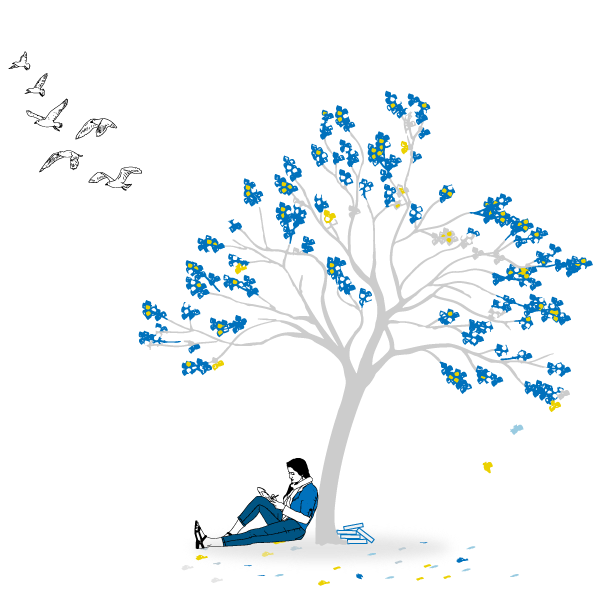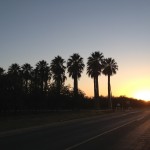Still Sundays: Shakti and Ibn Sina
It is a new year after all.
Makes me wonder about all those other “new” years. I never felt they were new per se so it wasn’t that I got duped the last decade with the habitual hype at the end of the year. It is just that I couldn’t participate as authentically as I would have liked because I knew better in my bones. But this year is finally new.
new | n(y)oō |
adjective
1. not existing before; made, introduced, or discovered recently or now for the first time
2. already existing but seen, experienced, or acquired recently or now for the first time
3. just beginning and regarded as better than what went before
The word new is of Germanic origin; related to Dutch nieuw and German neu, from an Indo-European root shared by Sanskrit nava, Latin novus, and Greek neos.
The word nava actually means nine. It is associated with Navarati, a Hindu festival of worship of Shakti which includes dance and festivities. The word Navaratri literally means nine nights in Sanskrit, nava meaning nine and ratri meaning nights.
I am neither familiar with the details of the festival nor much of the cultural traditions, and not because I am not Indian by geographic boundaries. However, I am familiar with parts of it, like the Garba dance (there exists a variety of styles now) and the concept of shakti.
Shakti comes from Sanskrit shak, “to be able,” and means sacred force or empowerment. It is the primordial cosmic energy and represents the dynamic forces that are thought to move through the entire universe in Hinduism. It is the concept of divine feminine creative power. On the so described “earthly plane”, Shakti most actively manifests through female embodiment and creativity/fertility, though it is also present in males in its potential, unmanifest form.
Most people in the West—will there always be an East and a West?—don’t know that in the 11th century, the theory of tabula rasa was developed more clearly by the Islamic philosopher Ibn Sina.
I am familiar with Ibn Sina due to serendipity performing a grand split: one leg on one end of the Universe and another touching the other corner. A performance so smooth that the magnanimity could not be fully comprehended until many decades later. Later like now. Today.
Ibn Sina is known in the western world as Avicenna. The word medicine comes from medicenna for he was known as the father of medicine. Responsible for 300 years worth of knowledge.
Ibn Sina was the name of Zain and my first school. When my parents sent us to live with our grandparents this was a new school—the infrastructure was still in the final stages of completion—near their house. There were only three grades and with no reputation other than a name of a historical figure familiar to everyone in the Arab world. Now it is has expanded into a college and is most expensive and has quite a prestigious reputation, where only those children whose parents’ have foreign investments can attend (although this was the case then too but not anywhere near the level it is now). My father took a leap of faith and decided to send us somewhere new instead of the schools that had century old reputations.
When my parents decided that Zain and I were going to attend this school my father offered the principal his magnificent oil painting that took him approximately five years to complete. It is five and a half feet by four feet. And every detail in that painting is electric and pulsates with a story. It is a huge painting of a very intense yet calm Ibn Sina sitting on a glorious Persian carpet surrounded by books. It tells a story and then another and then another. It is one of those paintings that captivates every time, there is something new to be discovered each view.
And my father just gave it. Gave it. I pray at least it has his name on it somewhere! I haven’t been to the school in too many years to count despite having returned to Lahore a few times in the last decade. But what I do recall is that my father did not want the fact that he offered that painting as a gift to mean Zain and I be treated any more special than the rest of the students. But somehow we were even though most teachers and staff had no idea that the painting in the main office was a work by our father. Zain and I didn’t ever mention it either. We were kids. Too busy playing during recess and having fun while learning without getting in too much trouble! Most teachers only knew that we were brother and sister, two grades apart, that we were different than the rest primarily because we were the only two children who went to that school who lived with their grandparents and our parents lived in another country.
It is a painting with vibrant colors that shares a vision of history and future at once. It is a painting that inspires awe. That is how my father saw Ibn Sina and offered that view to the world. To capture 300 years of history in one painting is nothing less than extraordinary.
Conversations about the Ibn Sina painting go like this:
Me: Why would you not charge them?! Why?!
My father: You don’t charge for a gift.
Me: I want that painting back. I want it here!
My father: It is fine where it is.
Me: They probably don’t even have it. What if they gave it away to a museum or something! Or that principal probably took it to his own home!
My father: Even an idiot knows a value of something even when he doesn’t know what the value is. They will still have it.
Me: I want that painting back! I want it here.
My father: It is fine where it is.
He is completely detached from all that he ever created when it comes to the medium of visual art. Orphan gems that are not even looking for their original creator.
This one man I knew for a very short time suggested I look into collecting all my father’s works and doing an exhibition here in New York or California. Those words set off like a charged impulse communicating throughout my system that this is something I must do some day.
We didn’t stay in that school too long as we hopped countries and moved back with our parents after two years.
Writing—creating—is some funny bone.
You sit there with nothing and are convinced you have nothing. But if you stay there long enough you end up hitting a tingling nerve and create a world where a few others may or may not join you. You create this world as you try to live in another world that can neither be in the past nor dreams of a future, at least not if you want to experience the now. At least if you want to be happy. If you practice hard enough you learn that memories and the past are not one and the same and neither is imagination and intuition. If you have practiced to deconstruct long enough you really can navigate an unknown territory where you just might create something new.
Before St. Thomas Aquinas, John Locke, Sigmund Freud, Jean-Jacque Rousseau, offered their personal spins on the Aristotelian and Avicennian concept of tablua rasa, it was Ibn Sina that shared the concept of al-‘aql al-fa‘il, the original meaning of tablua rasa. The executive intellect: the state of the human intellect at conjunction with the perfect Source of knowledge therefore ready for action.
Shakti is part of this executive intellect, which is beyond our regular intellect that makes sense of the past, has memories that have meaning, hopes that have understanding. The Universe just offered us Lego blocks to create whatever we want. Preferably something new, not what someone else wants to hear, read, see.
I woke up and danced without music this morning. An entire routine just came together. If I move to breath then air has music. I can make something new from nothing.
In fact, I propose this year we all can. Universe will reject anything less than that for it has moved on and stale is well…stale…
Stale comes from Old French…estaler: to halt.
You can’t halt evolution, you can only join forward or experience unnecessary anguish.
And so it begins.


I used to have a student called Shakti, the story about the origin of the name was really interesting to me. Later I traveled to India with her sister. Their family had to leave Nepal some years back due to political reasons. They are a really friendly family with wonderful kids.
You know Annie, your dad only wanted his kids to have good education, in that comparison the painting didn’t mean that much. I think you most probably knew that already. 🙂
Really enjoyed this part: “If you practice hard enough you learn that memories and the past are not one and the same and neither is imagination and intuition.” Your words give me faith and joy in creating new, thank you for this wonderful post.
I know I would be in awe of such a painting, and I hope you are able to collect and exhibit your father’s works someday.
Your piece this week reads, to me, like a story from your “Da Vinci’s Dreams” series: You begin with a definition, a new concept to grapple with, and then move to an image: Ibn Sina and your father’s painting, the extraordinary story of his gift to your school. You are the eager but baffled questioner of the riddling wise man, your father. I think now that both your parents are original types for the wise folk peopling your stories.
Like your stories, this piece created a complex web of associations–among New Year, newness, memory, shakti, detachment, and the patience in stillness that makes the tabula rasa burst open in words. A great tonic for the New Year.